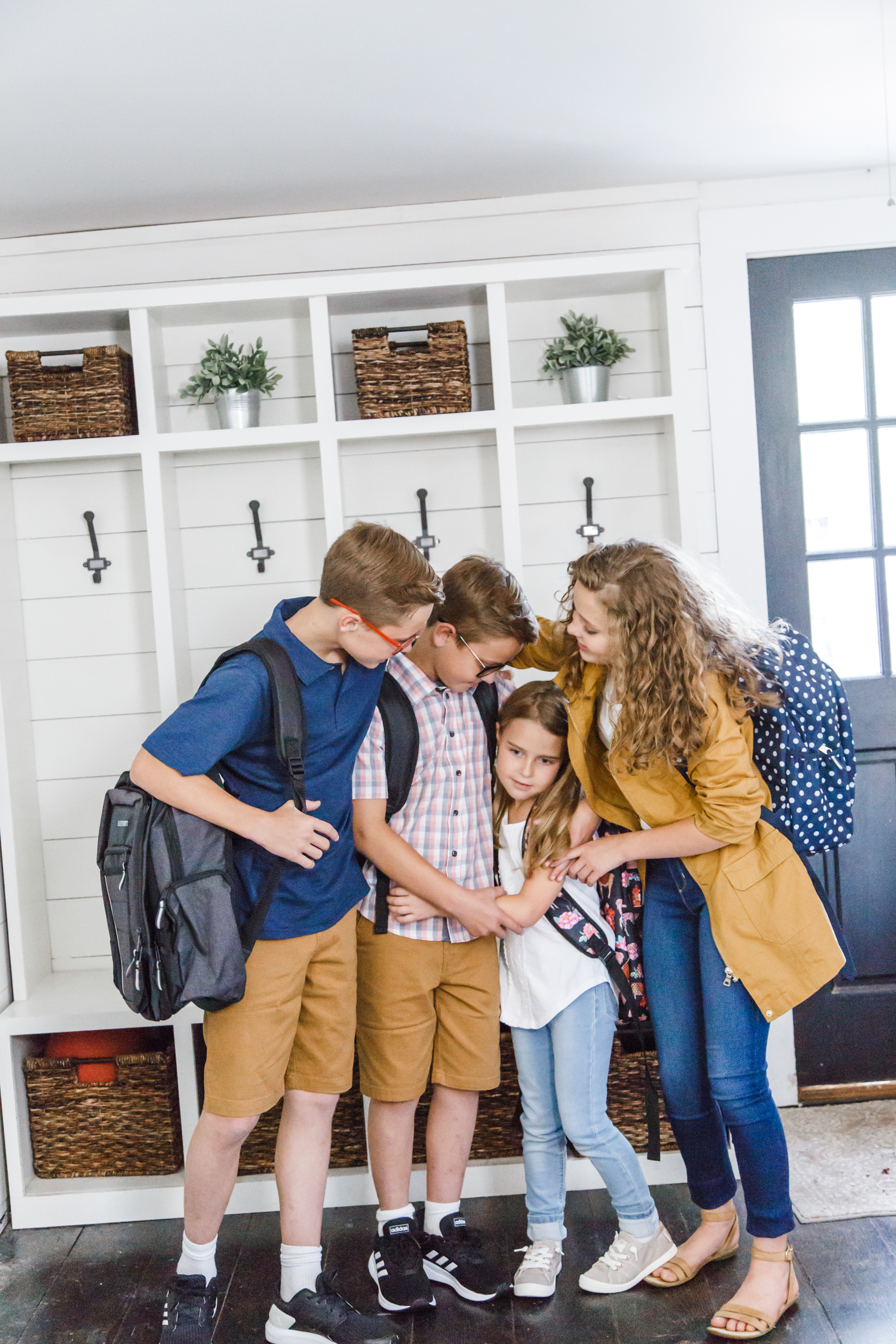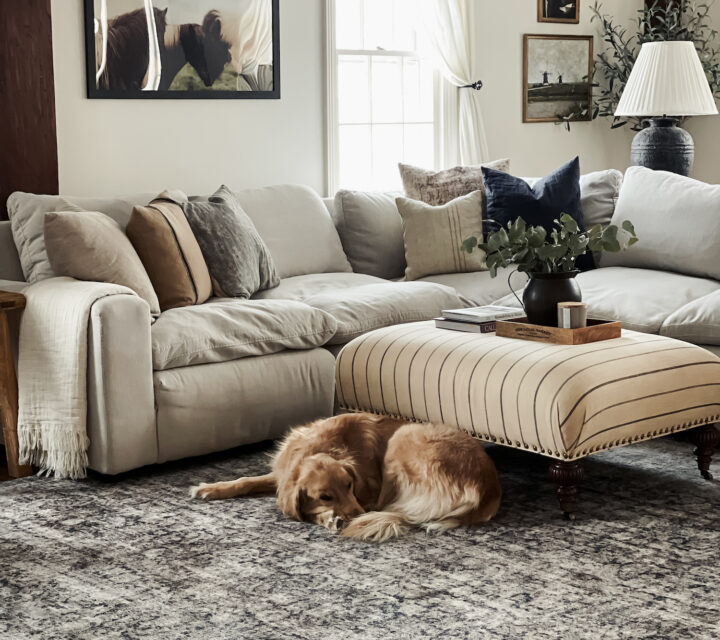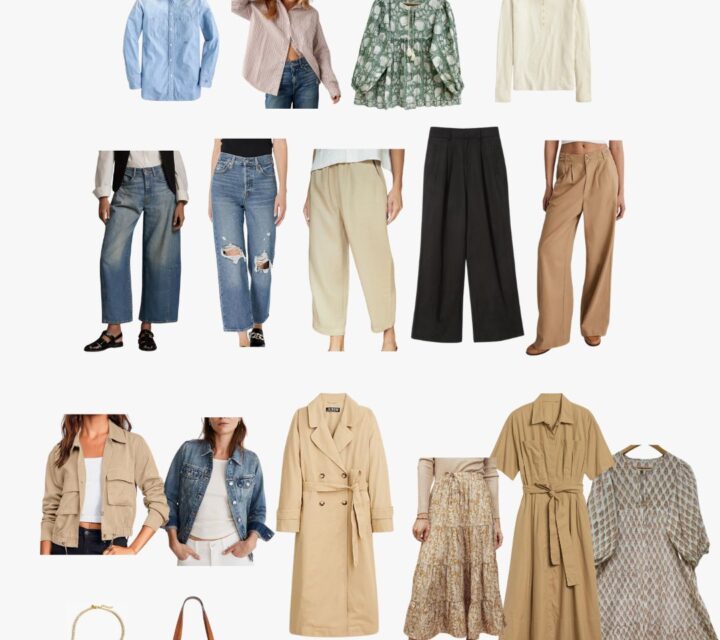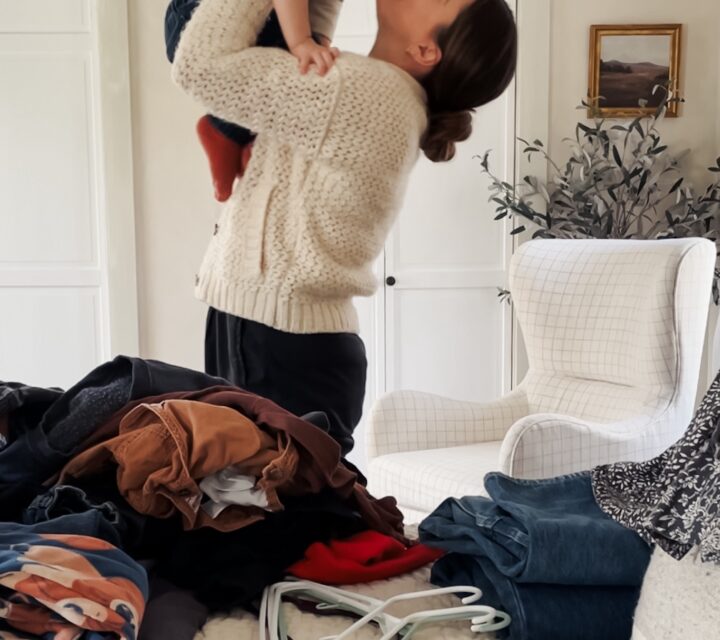*this post was created in partnership with Walmart.

I’ve talked a lot about intentional parenting here and over on instagram, which in a nutshell is about approaching the way I parent my children from a set of principles and with an end goal in mind. My end goal being, of course to help them develop into the very best version of themselves, to be kind, compassionate and contributing adults once they are grown up. Some of the most important traits I am working to help my kids develop are independence and accountability. If you think about it, there’s very little in the way of life stumbling blocks that having a solid foundation of independence and accountability won’t prevent.
When people are independent, they are naturally capable, self-sufficient, self-reliant, and self-assured. When they have developed accountability, they take responsibility for their actions, are dependable, principled and outward thinking. These are all traits that I strongly believe will serve my children for their entire life, both now as kids and later as adults. There are several ways to help children develop these two traits and I thought it would be helpful to share a few simple ways that have worked for me to help my kids develop independence and accountability in the new school year.
I always see any change as an opportunity for learning and growth, both in myself and in my children. And we really embrace this idea in our family, so that changes are not only welcomed, but embraced as opportunities for growth. (Incidentally, this has helped us all to become more flexible and resilient.) We all develop grit when we push ourselves to be more than we were before, and I think back to school is one of the most effective times to implement changes and improve habits, far more than the new year. Everything is fresh, there’s a new set of classrooms, teachers and schedules and it’s a great way to start new patterns of behavior and habits for living. Here are a few simple ways to help kids develop independence and accountability.

Set your expectations clearly. I believe one of the best things you can do for your kids is give them the freedom to begin to govern themselves with the understanding that there are expectations and natural consequences to how we behave/perform. Rather than micro-managing my kids, I set the expectations for the school year, and their role in the family and then make it clear to them that they are responsible to manage themselves. (This progresses to more and more responsibility the older they get, obviously. My first grader gets a lot more management than my high school sophomore.)
For example: when it comes to grades, my kids are all expected to get straight A’s. I expect this because all of my children are naturally very intelligent. (If they weren’t capable of straight A’s, then I would set a different expectation) but I know that if they put in a good effort and work hard they are each more than capable of accomplishing this. I set this expectation, and tell them that I am always available to help them if they are stuck on home work, or if they need help with projects or studying. But I don’t micromanage them. I don’t hound them about their homework and I don’t check in on their work or email the teacher daily. They are responsible for their grades, and if their grades don’t meet the expectations, then there are consequences, less free time, limited screens, etc. It feels counter-intuitive, but the less you micro-manage your kids (while still enforcing natural consequences) the more they learn to manage themselves. All my kids, despite their very different personalities, learning styles, study habits, etc. have thrived with this approach and maintained excellent grades.
This works for lots of scenarios, everything from grades, to behavior, to laundry and chores.
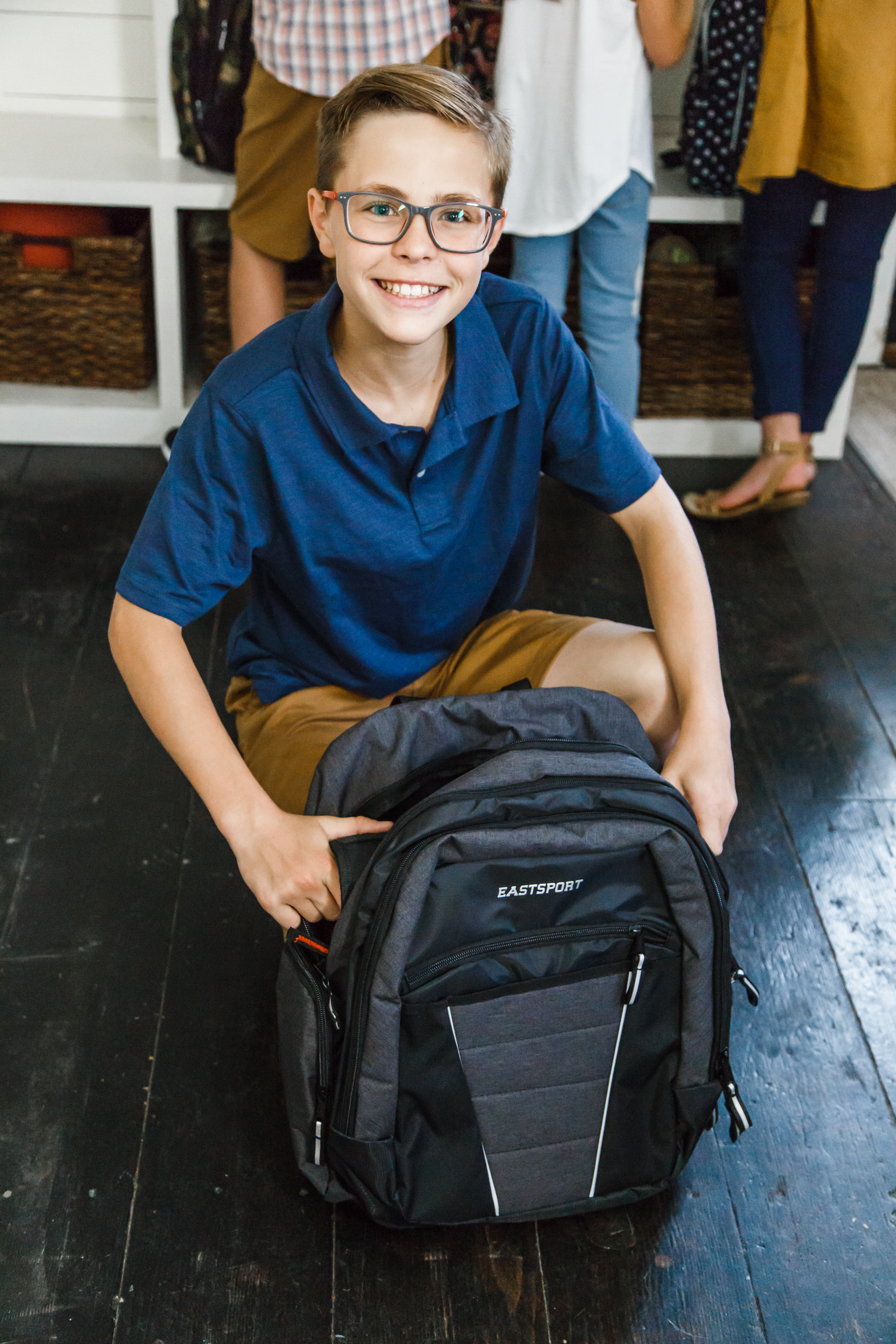
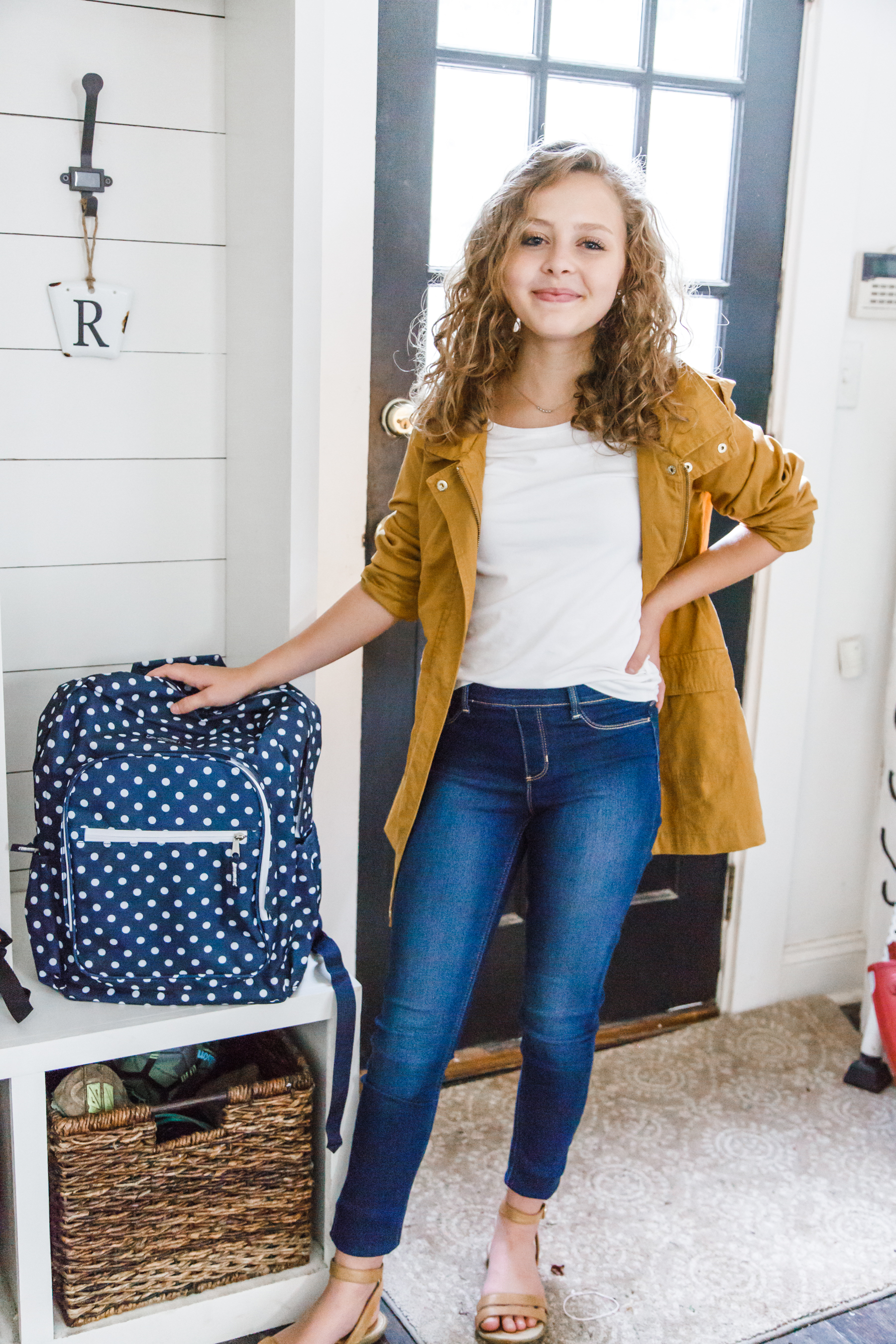
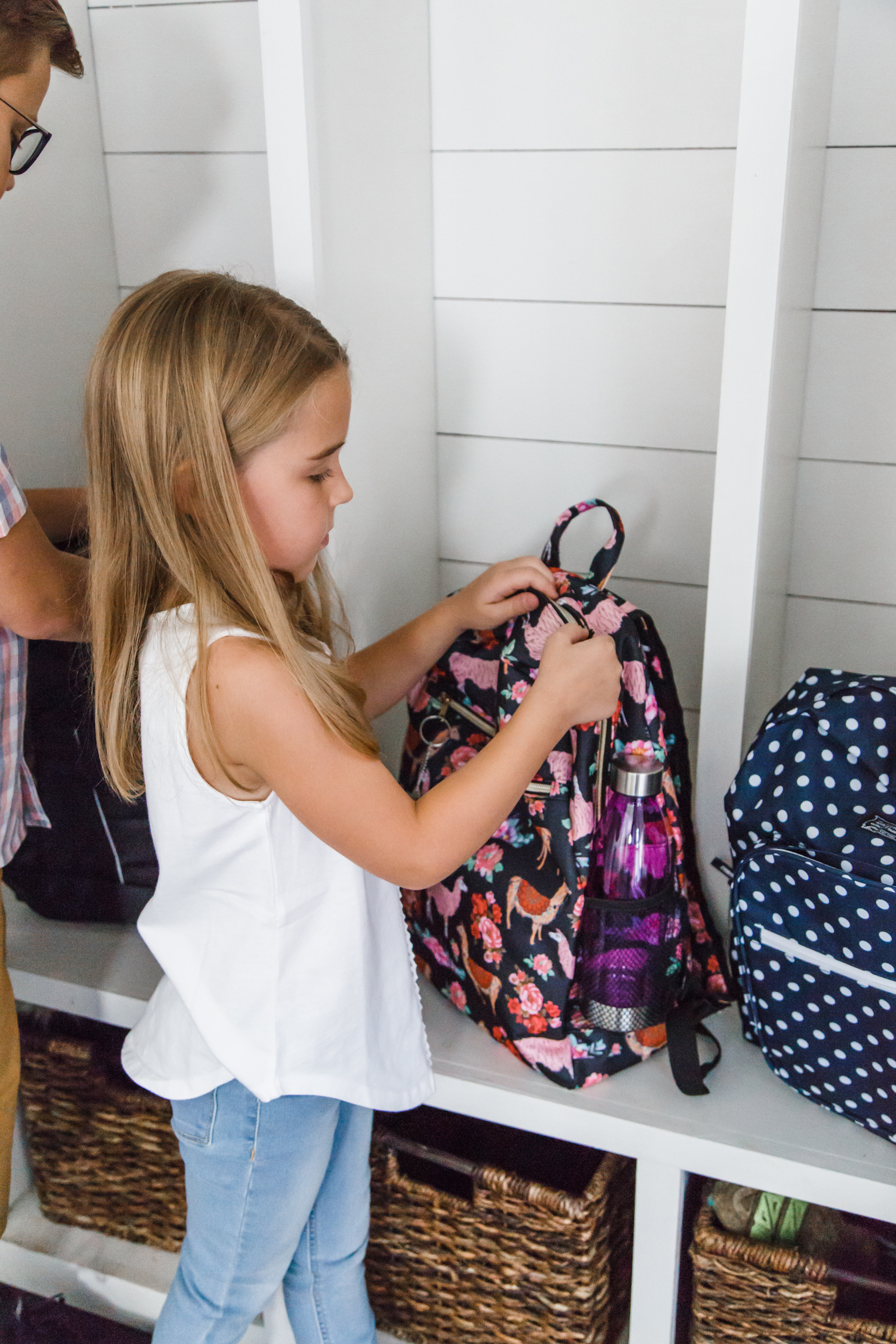
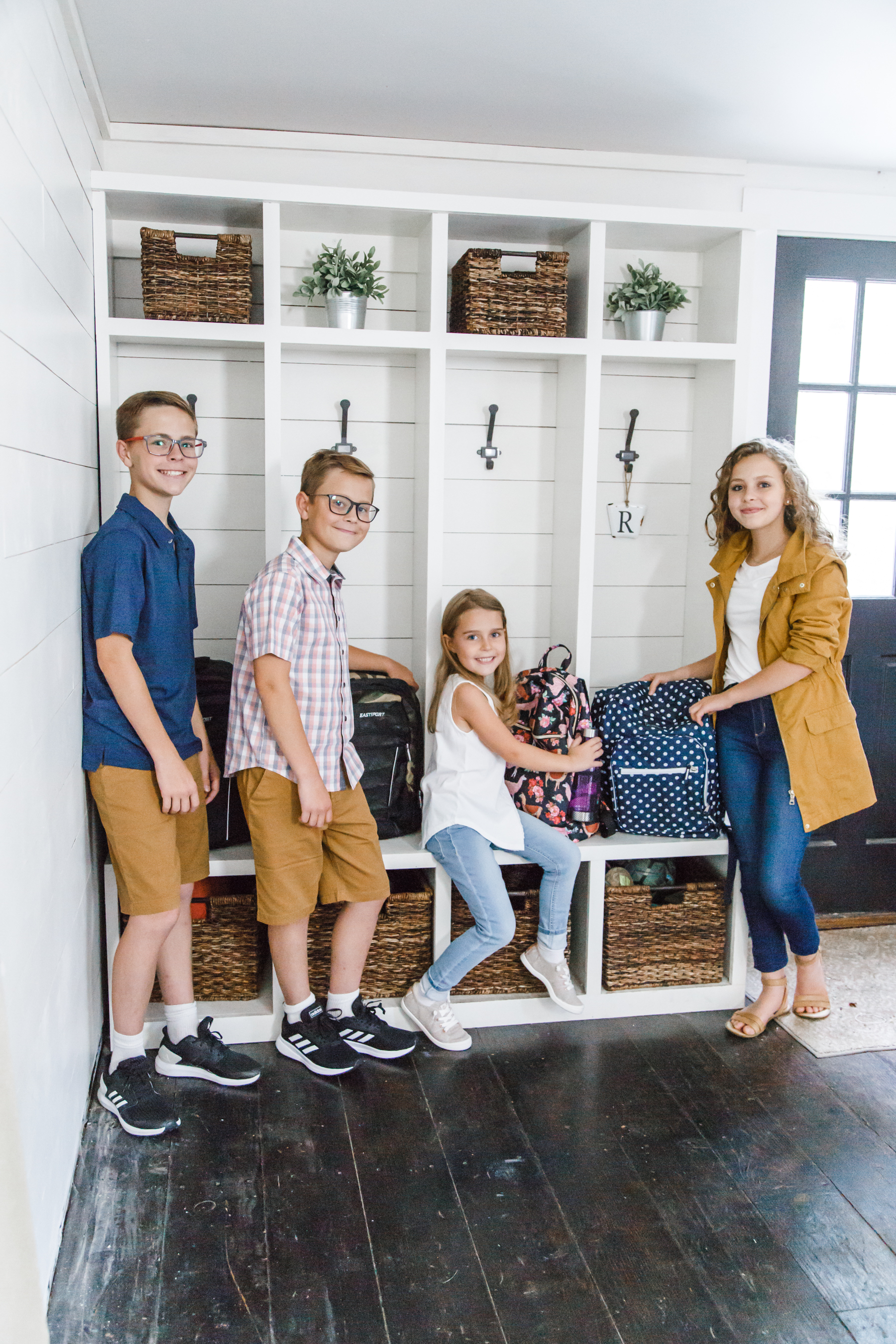
Have a set place for everything. If you want your kids to learn to be tidy and responsible with their things (especially their school things) then make sure you have designated places for them in your home. And make sure those places actually work for your life and your family! Last year, I asked my husband to build me these cubbies for Christmas because the space we had designated for backpacks wasn’t working. Now the kids each have their own cubby for their backpack. They are responsible to keep their backpack and school stuff in this space and to keep this space tidy. Because they have that ownership over this space, they are more responsible with their things. We also have designated areas for school papers and shoes, it has made all of our lives much easier.
Walmart has tons of options for organizing your spaces. Something simple like this cube organizer is great if you don’t have a large mudroom, because it will fit easily in a small entry, or hallway and help keep shoes and backpacks in order (just add hooks!). If you have more space or aren’t super handy there are tons of hall/mudroom organizers available here. You can also use trays to keep all the endless papers that are sent home organized. I have one thats divided and each child gets their own, that’s where they put papers that are sent home to be signed so they don’t end up lost. I highly recommend being intentional with how school stuff is organized right from the get-go of back to school.
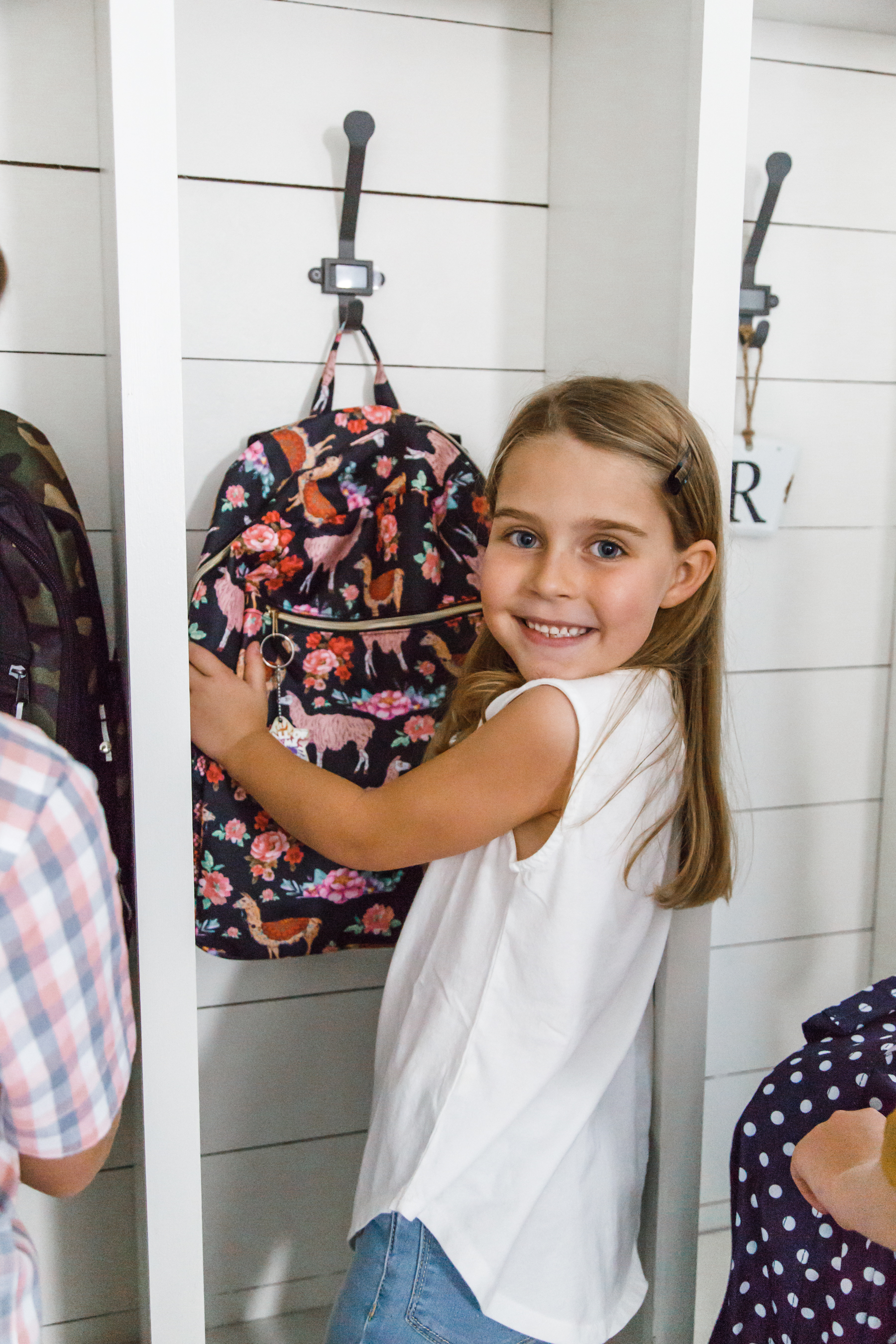

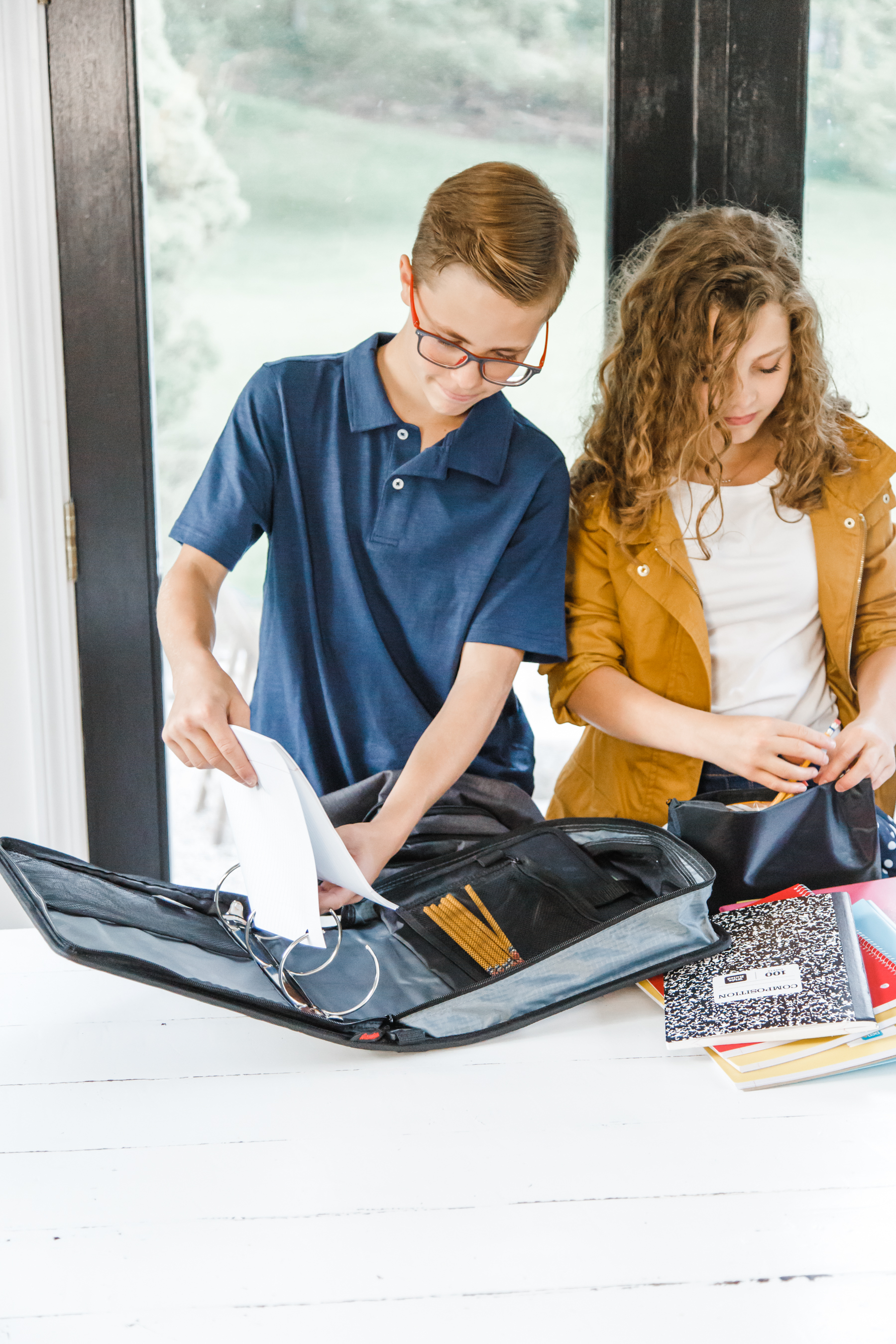
Let them manage their school supplies. Organizing a space in a way that works is highly dependent on the person who is using the space; what works for one person, won’t for another. It’s the same with children when it comes to the way they organize their backpacks and learning. I encourage my kids to be mindful about the way they “run their backpack” at the beginning of the year by sitting down with them and asking them to tell me what they need to stay organized and how they will keep and store the things they need for school. And then we sit down and order those pieces together.
It’s amazing how the kids have all come up with systems (each very different) on their own that work for them. Hannah uses a two binder system, (and prefers these simple no-nonsense binders), and divides her classes up by track day (they have a day 1, day 2 system). Each binder is divided with a set of folders, one for each class. Carter on the other hand prefers to keep it all in one place using this awesome zip-up binder. Ethan uses the same binder, but each boy organizes the space within the binder a little differently. Last year Ava and I came up with a system for her kindergarten folder, and she’s responsible to bring me papers from her teacher. Obviously I still hold her hand a lot on this one. Like I said, independence is a process…
By giving them ownership over the space in their backpack they are more invested and intentional about the way it is set up and run throughout the year. They are also more mindful about what we buy, because they start to realize what is and isn’t useful in staying organized and don’t want it cluttering up their limited space.

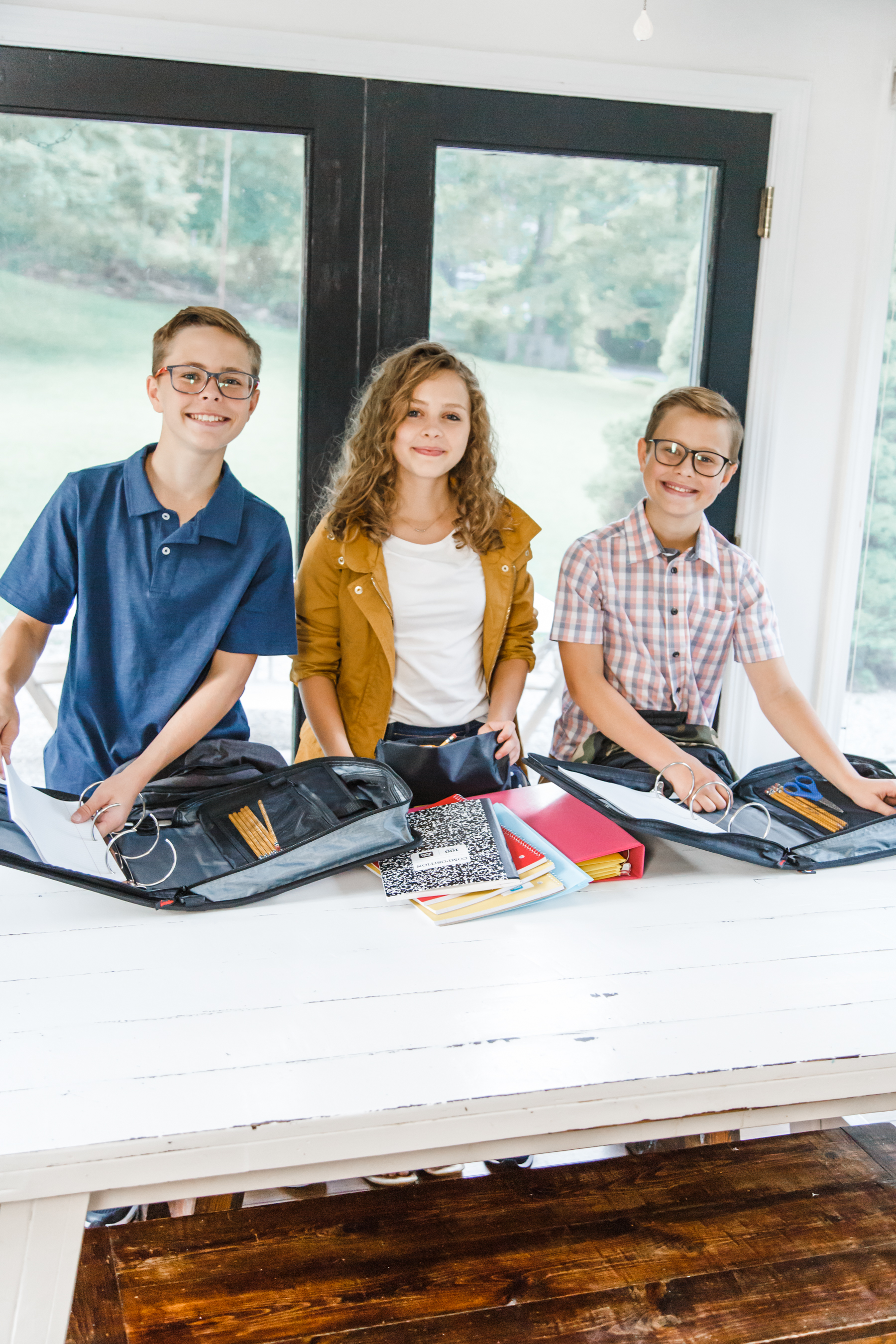
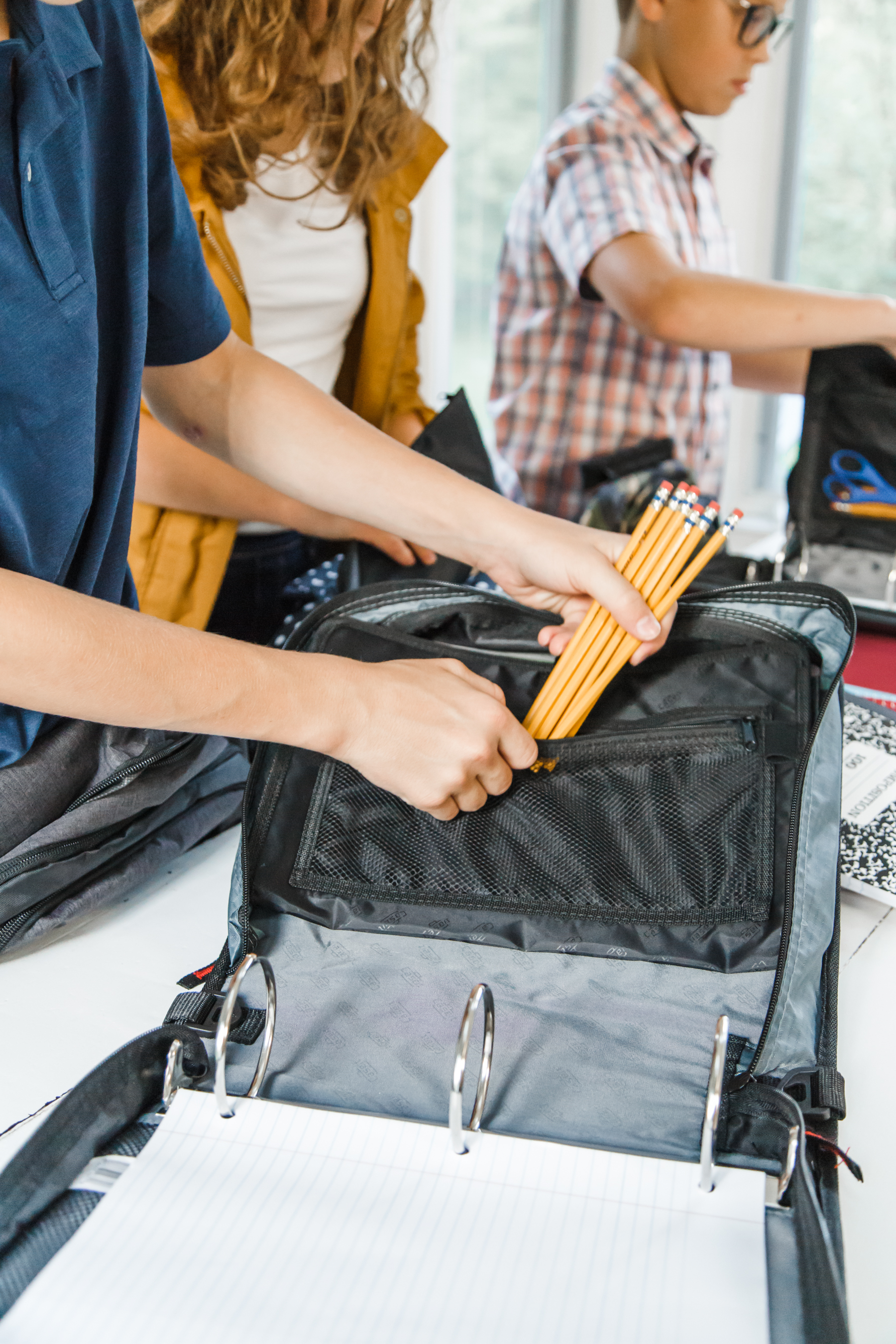


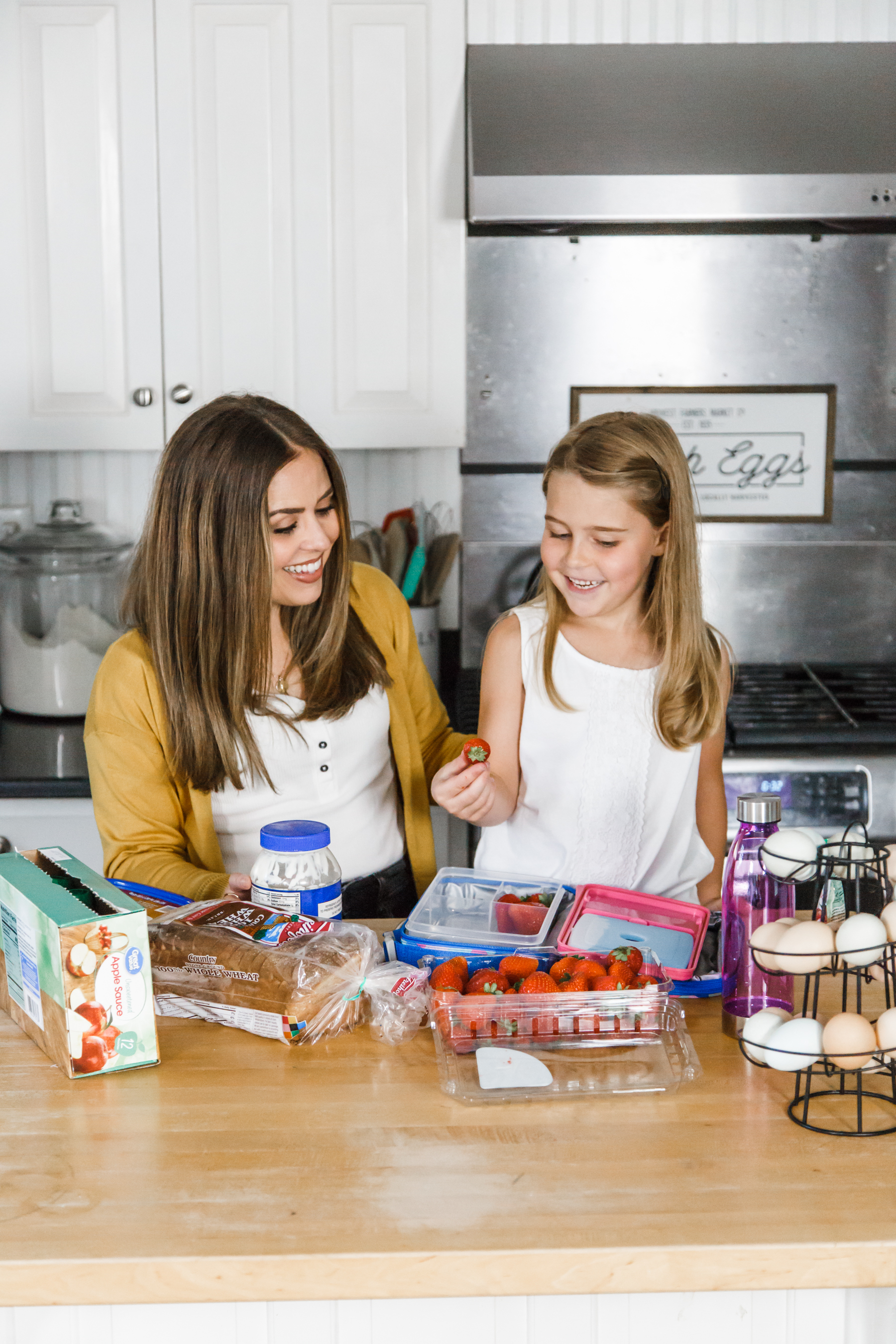
Let them make their own lunches. I know it doesn’t make you feel like a “Pinterest mom,” but it’s such a good idea to let kids make their own lunches. It teaches so many valuable lessons. They learn time management, especially if they choose to make their lunches in the morning. It also encourages them to be responsible for their nutrition. It’s important for kids to learn to have a balanced diet and to be responsible with what they eat, making their own lunch everyday teaching this accountability in a low-stakes situation. They also learn the consequences for not making a good lunch (which I guarantee will happen at least a time or two), all of my kids have packed meager lunches when they were in a hurry and ended up hungry, or wishing they had more variety. They always end up managing their time and lunch better the next day.
Starting in first grade, I begin working with my kids to help them learn how to make a good lunch with lots of variety and healthy options. This is Ava’s first year making her own lunch so I will work with her for a while and make sure she knows what to do and what makes for a balanced lunch. We bought her this awesome Bento lunch box and I love it because it minimizes waste and garbage and has a built in ice pack so everything stays cold. It also gives her a visual idea of how much food to pack for herself.
We also ditched juice boxes last year and my kids take their own water bottles instead. It’s less wasteful and way healthier for them. It helps them stay more hydrated and learn healthier drinking habits by not getting them addicted to sugary juice. If your kids are finding the transition from juice boxes to water hard, try slicing up fruit and putting it in their water in the morning. It will diffuse it with a little flavor and makes a big difference. Ava loves to slice up strawberries and put it in her water! These are great little reusable water bottles and they are under a dollar!


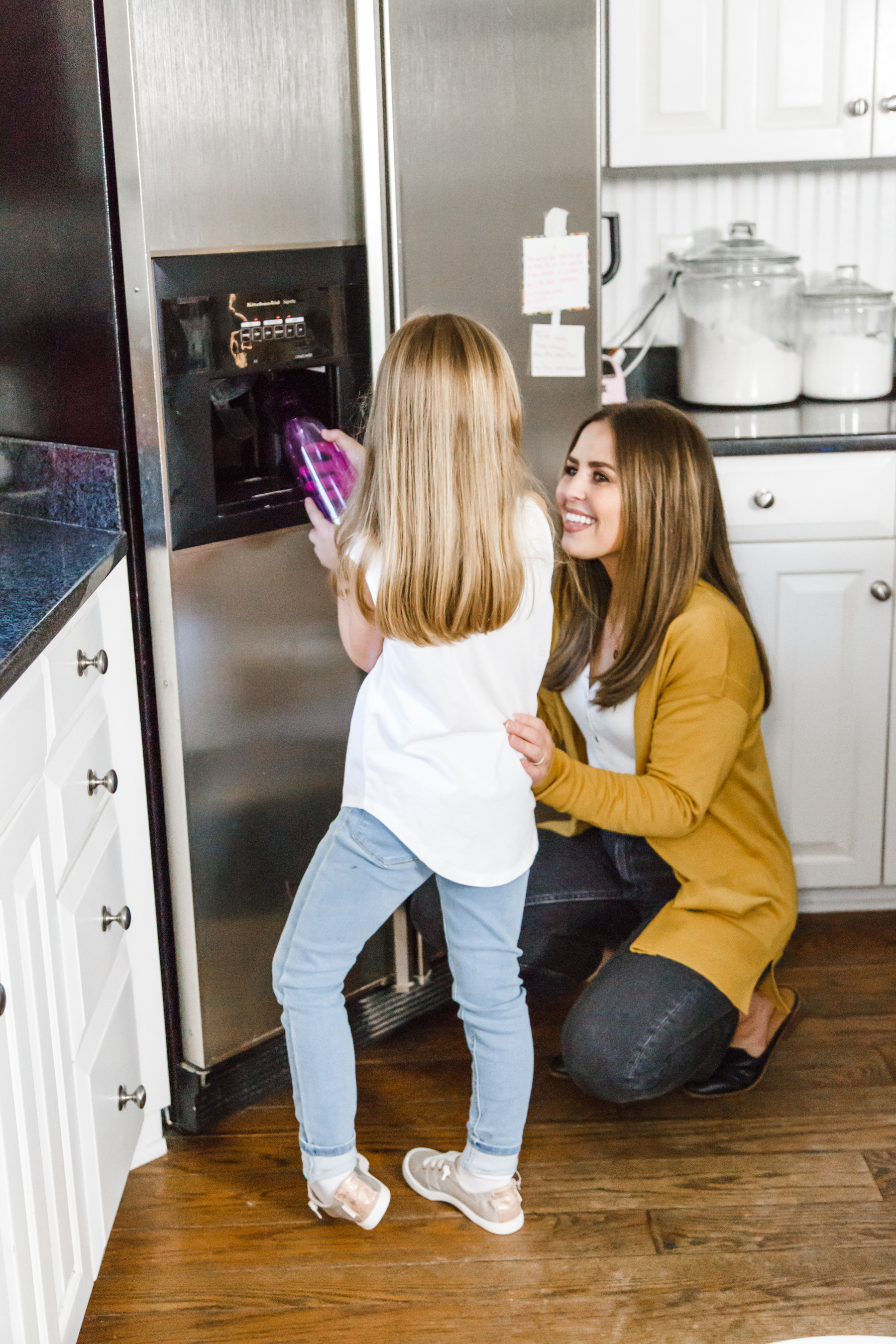
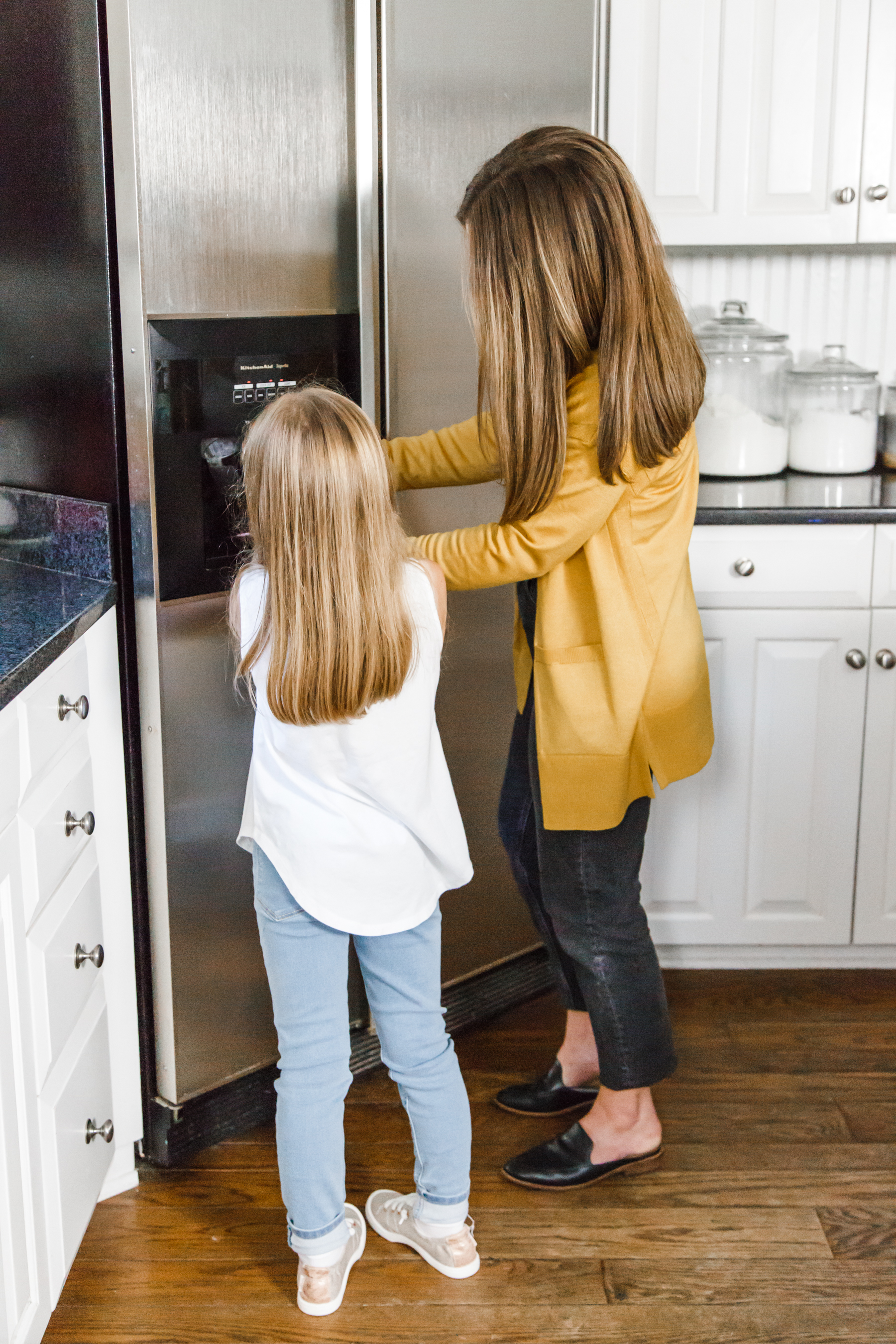
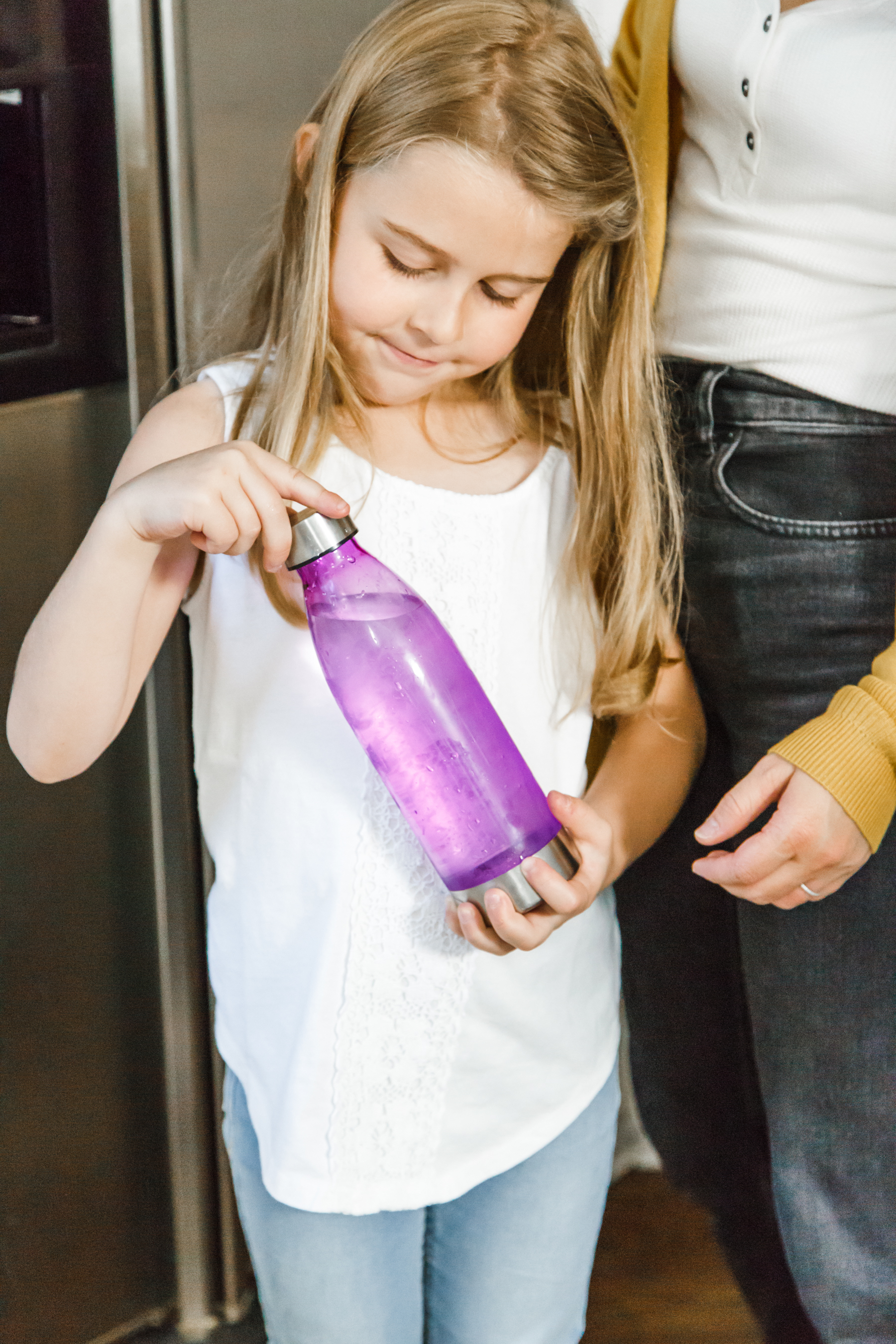

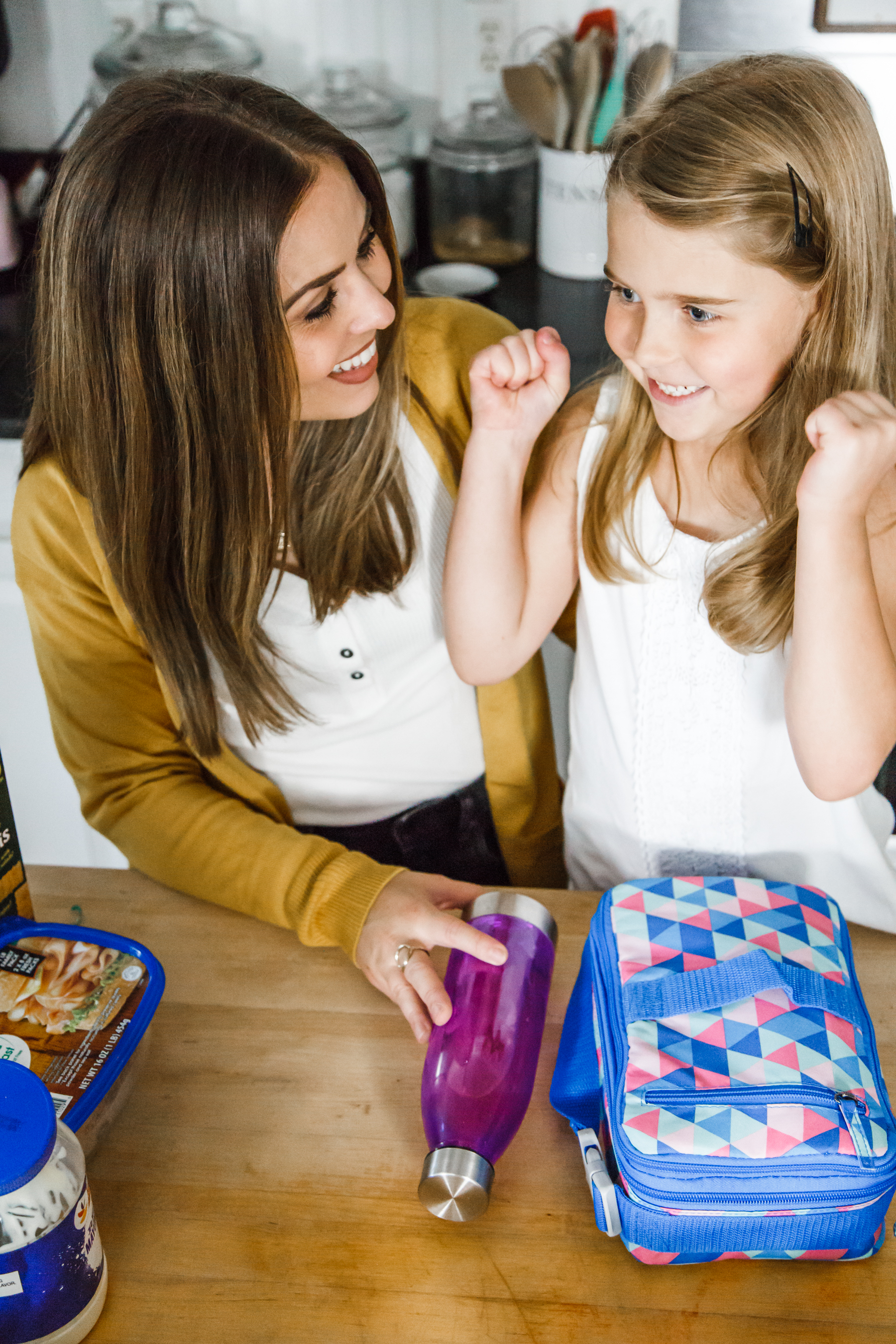
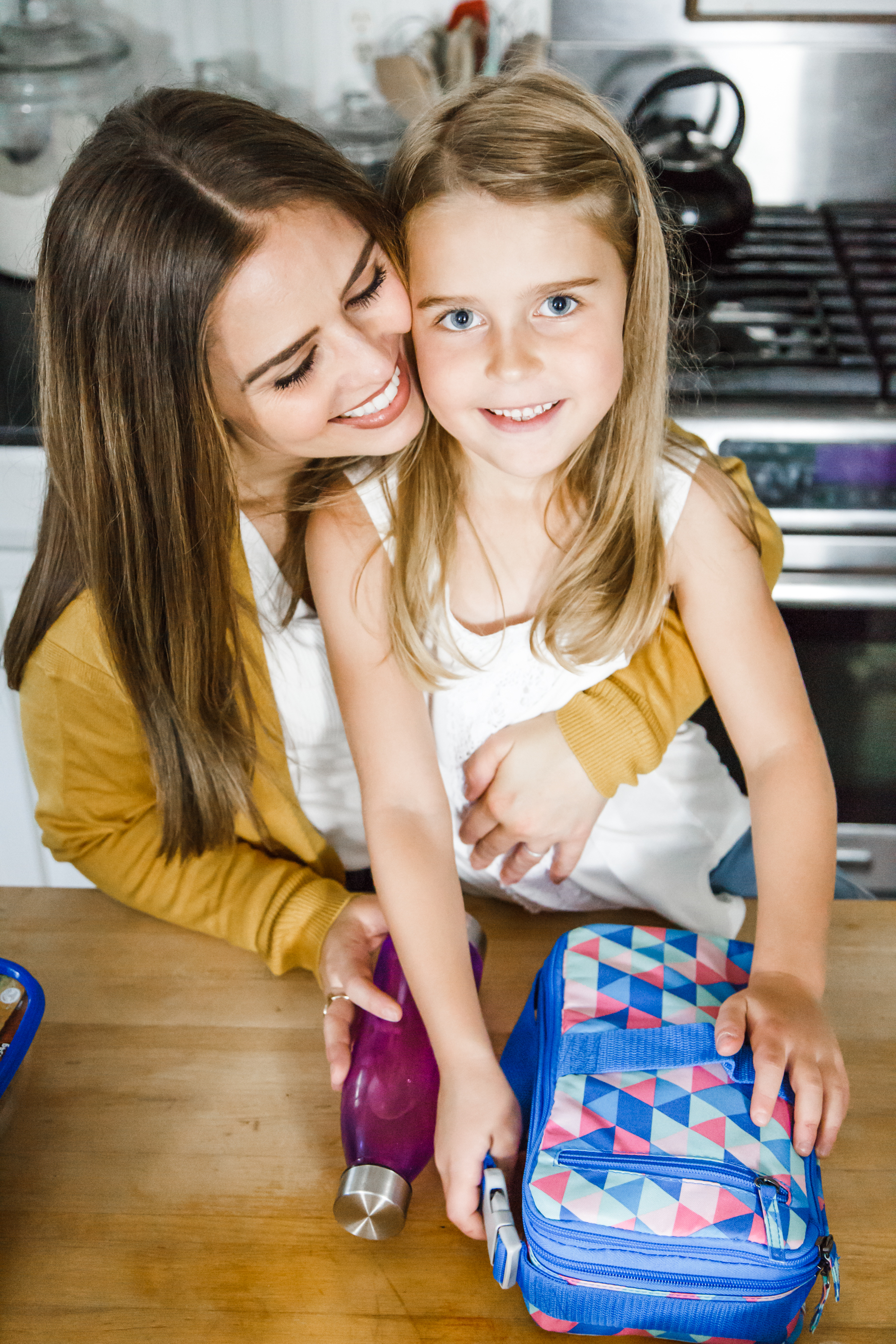

I hope you have found these simple tips helpful and if you have any questions about the things I shared, or parenting in general, please feel free to ask them in the comments! I’d also like to wish you all the best for the new school year, and hope this gives you some tools for a smoother and more productive year!
All products are linked below:
Backpacks: Carter’s black backpack, Ethan’s camo backpack, Ava’s Llama Backpack, Hannah’s Polka dot backpack.
Carter’s shorts & shirt. Ethan’s shorts and shirt. Hannah’s jacket, jeans, tee. Ava’s jeans & tank. My thermal and sweater.
Carter and Ethan’s binders. Ava’s Bento lunchbox. Hannah’s binders and folders. Water bottles.
